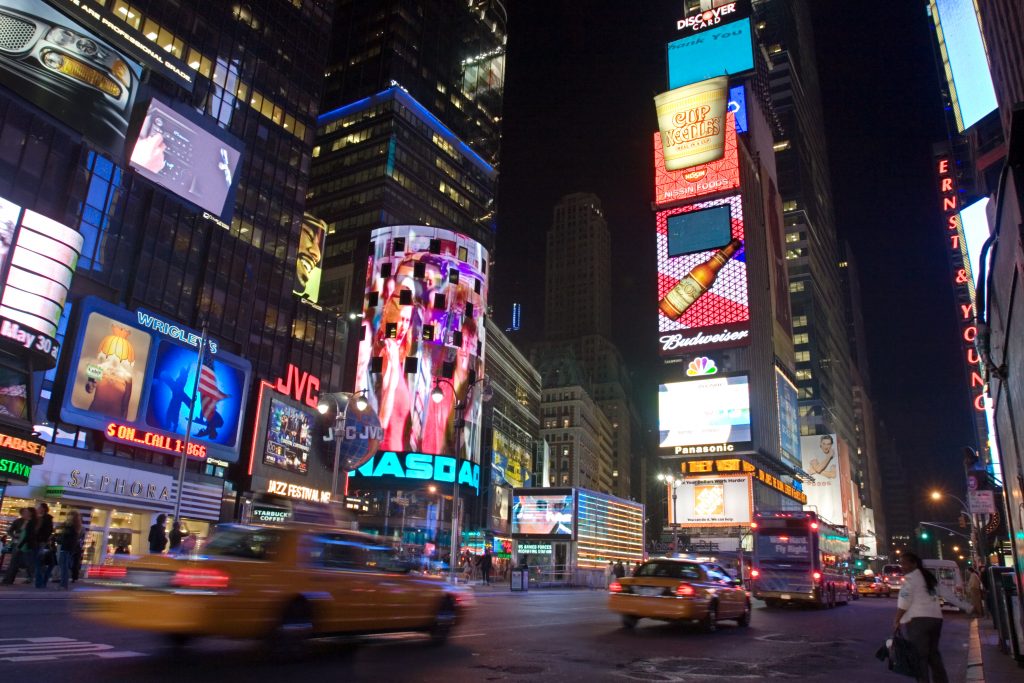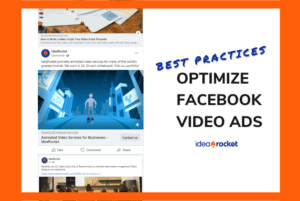One of the most traditional forms of marketing and advertisement has seen a remarkable transformation over the past decade. Out-of-home advertising has finally caught up with the rest of the world and gone digital. This revolution of digital billboards has created a new home for animators and out-of-home advertisers to collaborate in exciting new ways.
You’ve most likely seen digital billboards in high traffic areas like Times Square for a while now, but they have had a significant amount of growth over recent years.
Previously, digital billboards were only accessible to large corporations who had the marketing budgets to match the high prices of advertisement, but advances in technology have allowed prices to drop into an affordable range. According to Business Wire,
“The digital billboards segment accounted for a market share of more than 51% in the global advertising market in 2015,”
and this is only expected to grow. With the rapid progression of digital billboards, it’s important to understand the opportunities that they present.
Digital Billboards vs. Traditional Signage
The advent of digital billboards has opened the box to an unlimited universe of creative freedom for marketers to play with. The new age vibrant LED screens with animation and video capabilities allow advertisers to display as much content as desired. This is unlike traditional billboards that restrict your content to the confines of what you can fit on the display.
Also, advertisements can be implemented on digital billboards as soon as they are ready to be downloaded. These billboards transmit over cellular networks to display live data in a matter of minutes or even seconds.
This is a stark contrast from traditional billboards that can sometimes take weeks to be printed, distributed, and displayed. This added level of convenience and efficiency is a big bonus to companies looking to get their message out quickly.
Engaging Consumers Like Never Before
It’s crucial to do something that differentiates your company from the rest of the pack. Digital billboards can be the best way to display your message in an engaging and sometimes interactive way that will stick with the majority of people who view them. This is especially important with the increased use of ad-blocking software’s on the internet that can remove your online advertisements from sites.
According to a 2015 Nielsen survey, 75% of individuals reported noticing a digital billboard in the past month; while 55% of people reported seeing the message on the billboard most or all of the time. These advertisements can also interact with consumers in real-time using quick response coding (QRC). QRC lets advertisers display barcodes that store data and other information about a brand or product for people to scan with their mobile devices.
Continually, information from the same study shows that the top performing brand categories on digital billboards are:
- Entertainment and Sports
- Gaming
- Fast-Food Restaurants
- Recreation, and
- Legal Services
While almost any brand category can enjoy success from using digital billboards, these categories gained the best advertisement recall among passer byers. To improve recall the of an ad, it’s important to create an engaging display with eye-catching colors and animation.
Flexibility Of The Future
On top of leaving an impressionable message, digital billboards allow advertisers to switch what message they want to show to quickly adapt to outside variables that can cause a drastic shift in people’s wants and needs like weather, traffic, or social media.
For example, on a hot day, a supermarket would want to switch up their advertisement to promote the cold beverages it has in stock. This allows the super market to meet the desires of consumers trying to beat the heat.
This flexibility is a tremendous opportunity for firms looking to maximize their advertising capacity and reach more customers at the beginning of the consumer decision journey. There, they can take control of the central purchasing decisions and enhance the overall customer experience. This hopefully will lead to better brand awareness and high advocacy among a loyal client base.
Drawbacks To Digital Billboards
Digital billboards are not without their faults. Since the bright illumination of the boards is more engaging than their traditional counterparts, some people view digital billboards as more distracting. However, a 2013 study conducted by the Federal Highway Administration (FHWA) and the Department of Transportation (DOT) stated,
“On average, the drivers in this study devoted between 73 and 85 percent of their visual attention to the road ahead for both [Commercial Electronic Variable Message Signs] and standard billboards… This range is consistent with earlier field research studies. In the present study, the presence of CEVMS did not appear to be related to a decrease in looking toward the road ahead.”
The study contradicts the notion that a digital billboards is more distracting to drivers than a standard billboards.
Another flaw to consider is how long the displays show an advertisement. Digital billboards often show ads from numerous companies on a rotating basis.
FHWA regulations mandate that a digital billboard with transitioning advertisements rotate between four to ten seconds with a recommended transition time of eight seconds. With these quick transition times, it’s possible that a potential customer could pass by a billboard without ever getting a chance to see your advertisement.
Smart Billboards: The Next Step
The progression of out-of-home advertising hasn’t stopped with digital billboards. Companies like Apotek (a Swedish pharmacy) have been utilizing the latest technology for their ad campaigns.
In an attempt to promote products that help smokers kick the habit, Apotek placed screens with a still image of a man in areas known to be populated by smokers. If you think that alone may not seem like a very effective way to reach smokers, you’d be right
The billboards were also equipped with smoke detectors that triggered the still image of the man to start coughing once they picked up smoke from nearby cigarettes. This creative use of smart billboard technology was an effective way to engage a target demographic in a personalized manner.
The whole idea behind smart billboards is that they take cues from the people around them and display tailored ads to these onlookers. Some billboards are using geo-fencing to get a better sense of their surroundings.
A geo-fence is a virtual boundary that uses software to trigger a response when a mobile device enters or leaves. For example, if a department store puts up a smart billboard on a crowded street corner they can set up a geo-fence around it. If someone with the store’s app enters the boundary, it’ll trigger a response sending a text to alert the person to a sale the store is having.
To learn more about geo-fencing, check out the video we made for Skyhook.
Other smart billboards use hidden cameras to take photos which computer databases use to analyze gender and age to get a better understanding of the surrounding demographic. It’s important to remember that marketing efforts should not be “one size fits all,” and that customization is an important way to reach consumers on a personal level.
The technology is still being played around with, and companies like Yahoo have recently filed for patents to develop future smart billboard technology; making it clear that digital billboards will continue to grow to fit the world’s ever evolving wants and needs.
If you want to keep receiving great content and get our free eBook, sign up here for our newsletter.




